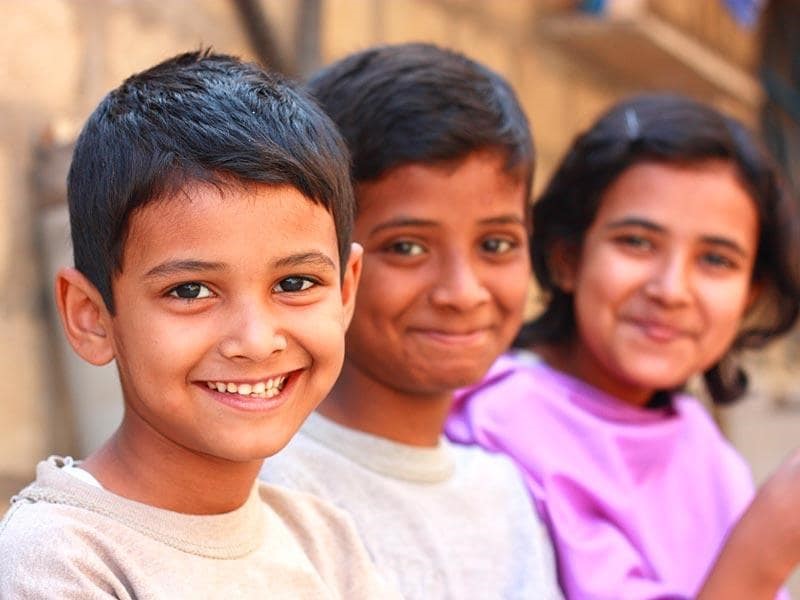Child rights are not only fundamental but also crucial for ensuring the well-being and development of every child. India, with over 444 million children under the age of 18, has the largest child population in the world, underscoring the immense significance of protecting their rights for the nation’s development and progress. In this context, prioritizing the safeguarding of child rights becomes paramount in India, a country with a staggering population of children. Recognizing this imperative, the Indian Government, civil society organizations, and various stakeholders have made significant strides to protect and promote child rights. This article delves into the key aspects of child rights in India, sheds light on the challenges faced, and explores the measures being taken to pave the way for a brighter future for the country’s youngest citizens.
Legal Framework and Key Rights:
India has established a robust legal framework to protect the rights of children. The Constitution of India guarantees certain fundamental rights to children, including the right to life, education, and protection against exploitation. The Right to Education Act (2009) ensures free and compulsory education for children aged 6 to 14, aiming to eliminate barriers to education and promote inclusive learning opportunities.
The Juvenile Justice (Care and Protection of Children) Act, 2015 is another significant legislation that emphasizes the rehabilitation and reintegration of children in conflict with the law, focusing on their overall development and well-being. Additionally, the Protection of Children from Sexual Offenses (POCSO) Act, 2012 addresses the issue of child sexual abuse by providing stringent punishment for offenders and establishing child-friendly legal procedures.
Challenges and Concerns:
Despite significant progress, challenges persist in safeguarding child rights in India. One of the major concerns is child labour. Despite the existence of laws prohibiting child labour, it continues to be prevalent in various sectors, particularly in informal settings. Poverty, lack of awareness, and the absence of adequate social protection measures contribute to this issue. Efforts to combat child labour involve enhancing enforcement mechanisms, raising awareness, and providing social support to vulnerable families.
Child marriage is another pressing issue that violates the rights of young girls. Although the legal age of marriage for girls is 18, child marriages still occur, especially in rural and economically disadvantaged areas. Eradicating child marriage requires community engagement, education, and empowering girls with knowledge and skills.
Ensuring child protection from abuse and exploitation remains a significant challenge. Despite stringent laws, cases of child abuse, child trafficking, and online exploitation persist. A multi-faceted approach involving law enforcement agencies, child protection services, and awareness campaigns is crucial to combat these crimes effectively.
Efforts and Solutions:
To address these challenges, several measures have been undertaken by the Indian Government and civil society organizations. The Integrated Child Development Services (ICDS) scheme is a flagship program that focuses on the holistic development of children below six years of age. It provides services such as nutrition, healthcare, immunization, and early childhood education, aiming to give children a strong foundation.
The Beti Bachao, Beti Padhao (Save the Girl Child, Educate the Girl Child) campaign aims to promote the rights of the girl child and address issues of gender inequality. It emphasizes the importance of education for girls, discourages child marriage, and encourages empowerment through skill development.
Efforts are being made to strengthen child protection mechanisms, including the establishment of special courts for speedy trials of cases related to child rights violations. Various helpline services and online reporting platforms have been introduced to facilitate reporting and support for children in need.
Protecting and promoting child rights is crucial for the overall development of India. While significant progress has been made, persistent challenges demand continued efforts from all stakeholders. Strengthening the enforcement of existing laws, enhancing social protection measures, and increasing public awareness are vital steps forward. Investing in quality education, healthcare, and social support systems can ensure a nurturing environment for children to thrive.
Thus, every child deserves the opportunity to grow, learn, and dream. By upholding child rights, India can lay a strong foundation for a brighter and more equitable future, where children are empowered to reach their full potential. It is through collective action, collaboration, and sustained commitment that the nation can truly protect and nurture its youngest citizens, paving the way for a prosperous and inclusive society.
